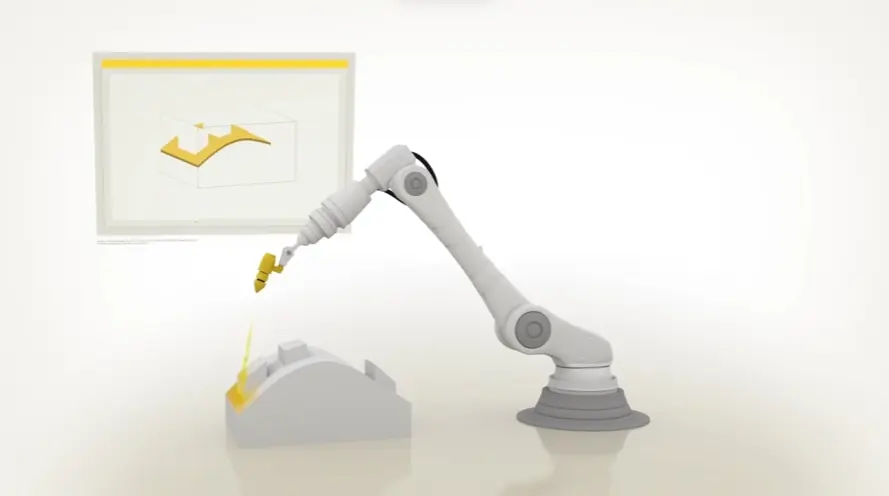Imagine instantly seeing inside complex machinery? I know simplifying intricate industrial processes for our frontline teams is a constant challenge. Ensuring they grasp every detail, every sequence, with absolute clarity is paramount for safety and efficiency on the floor.
That level of understanding demands more than static manuals. This is where advanced visualization excels, especially with **3D Industrial Training Video examples**. Seeing how others masterfully break down complex operations offers powerful insights for enhancing our own training programs.
It’s crucial to plan ahead when it comes to high-quality video production. Discuss with our team, how you can get visual style, budget, timeline in sync.
Jai Ghosh
Video Producer at Advids
Let's talk

How does 3D animation enhance industrial safety training?
3D animation significantly enhances industrial safety training by visualizing complex hazards and procedures, making them easier to understand and remember. It increases trainee engagement, allows safe simulation of dangerous scenarios, provides standardized training across the workforce, and helps learners visualize the consequences of incorrect actions, leading to a safer environment.
How can 3D animation be used for equipment operation training?
3D animation is used for equipment operation training by demonstrating step-by-step procedures, including internal workings. It lets trainees virtually practice using components, visualize intricate parts, simulate various operating conditions for troubleshooting, and offers a safe way to learn on expensive or hazardous machinery before hands-on practice.
How do 3D visualizations help in understanding safety protocols?
3D visualizations aid safety protocol understanding by breaking down complex steps into clear sequences and showing the relevant environment and equipment. They help overcome language barriers, allow visualization of errors or omissions, and illustrate why each step is necessary for safety, improving comprehension and adherence.
What are the benefits of using animation for manufacturing process training?
The benefits of using animation for manufacturing process training include clearly showing material and action flow, providing a consistent overview of the entire process, and helping trainees understand their role within the larger workflow. It simplifies abstract concepts and enables rapid onboarding for new employees by presenting processes clearly and engagingly.
What types of technical procedures can be explained with 3D animation?
3D animation can explain various technical procedures like assemblydisassembly, detailed maintenance tasks (e.g., replacement), complex testing and calibration sequences, and troubleshooting flows. It's particularly useful for procedures involving internal components, precise steps, or hazardous environments, showing actions and interactions clearly.
Can animated standard operating procedures improve employee performance?
Animated standard operating procedures can improve employee performance by making SOPs easier to understand and recall, increasing compliance and reducing errors. Their clarity leads to less time spent referencing materials, boosting efficiency. Standardized visuals ensure consistent execution and higher output quality, with increased engagement translating to better on-the-job application.
How effective is 3D animation for maintenance training?
3D animation is highly effective for maintenance training as it clearly shows internal components and their interaction during repair. It reduces training time, increases comprehension over static materials, and allows safe virtual practice on expensive equipment. This visual clarity improves accuracy in performing tasks and aids in troubleshooting by simulating potential faults.
How is industrial machinery animation used for training purposes?
Industrial machinery animation is used for training by showing internal workings and part interaction, demonstrating startupshutdown and emergency procedures, and visualizing safes zones around machines. It explains complex controls and error codes visually and allows trainees to explore virtual models from any angle for comprehensive understanding.
How realistic are hazardous environment simulations created with 3D animation?
The realism of 3D hazardous environment simulations depends on the detail and technical accuracy built in. Visually, they can be highly realistic, depicting environments like confined spaces or spills accurately. While not physically immersive like VR, they effectively replicate the procedural responses needed, allowing safe practice of reactions to rare or dangerous events.
What is the process for creating technical procedure animations for industrial training?
Creating technical procedure animations starts with understanding the procedure and audience with subject matter experts. It involves scripting and storyboarding to plan visuals, creating or sourcing 3D models of equipment and environment, and the core animation phase to demonstrate steps. Post-production adds necessary labels, annotations, and final rendering.
How 3D simulates complex equipment operation
Simulating complex equipment operation using three-dimensional models allows for an unparalleled level of detail and interaction. Learners can explore intricate machinery from every angle, gaining familiarity without needing physical access. This capability extends to demonstrating internal workings and complex processes that are impossible to show with traditional methods, creating a virtual hands-on experience.
Creating the intricate visual detail required for realistic simulation often involves detailed 3d industrial animation, building digital twins of complex systems. This enables individuals to practice assembly, maintenance, or operational procedures repeatedly in a completely safe environment. They can make mistakes and learn from them without consequence, building confidence and competence before ever touching actual equipment.
To fully leverage the capabilities of realistic environments, producers create a 3D Industrial Training Video that allows hands-on virtual practice. However, simply building the simulation is only part of the process. Maximizing their impact requires strategic planning around viewer engagement and measuring effectiveness. Several approaches help ensure these investments translate into tangible results and skilled operators.
- Crafting clear and specific calls to action proves essential for guiding learners toward desired outcomes post-training. Instead of general prompts, action-oriented text aligned with the video's purpose directs the next steps.
- Measuring the return on investment involves tracking costs against generated value, such as faster onboarding times or fewer errors in the field after training.
- Analyzing viewer behavior within the simulation, perhaps using heatmaps or attention tracking, provides valuable data on which sections resonate and which might cause confusion, informing future content refinement.
- Integrating elements like social proof or conducting A/B tests on different video components helps optimize content for maximum learner engagement and knowledge transfer across various platforms.
Effectively implemented, these strategies ensure that powerful 3D simulations not only educate but actively contribute to achieving operational goals and fostering a highly skilled workforce.
Visualizing complex industrial processes
Leveraging 3D visuals provides powerful ways to depict intricate industrial operations and environments. Beyond the initial creation, maximizing the impact of these sophisticated training tools becomes the focus. Measuring return on investment is paramount, translating production costs into tangible value. This value manifests through outcomes like generating increased qualified leads by creating well-informed prospects, shortening the sales cycle, or decreasing support ticket volume as users gain a deeper understanding of complex features.
Analyzing viewer behavior offers critical insights into effectiveness. Tracking viewer interaction within a 3d industrial process video reveals exactly which sections hold attention or cause drop-off. Tools like heatmaps provide visual data, showing where viewers focus or segments they might rewatch for clarity or skip entirely, allowing for targeted refinement of content.
Incorporating social proof builds immediate confidence with viewers. Displaying logos of recognizable client companies or sharing statistics about user success quickly establishes credibility. Crucially, concluding videos with clear and specific calls to action guides viewers toward desired next steps, moving beyond generic prompts to action-oriented text relevant to their journey.
- Employing A/B testing on elements like the video thumbnail, opening seconds, or CTA phrasing helps optimize for audience resonance and higher conversion rates.
- Tailoring content through platform optimization ensures the video performs effectively whether viewed on a social feed requiring instant engagement without sound or a product page allowing for greater detail.
- Using real-world scenarios within visualizations grounds the training, showing how concepts or equipment integrate into actual workflows.
- Continually refining content based on performance data ensures the investment yields sustained benefits.
Applying these strategic approaches ensures a 3d industrial safety video or process guide not only educates but actively contributes to measurable business and operational improvements.
Maximizing training video visual clarity
Visual clarity in training videos is about more than just technical resolution; it is the art of making complex information immediately understandable and actionable. Strategic design choices transform how employees absorb and retain crucial procedures, ultimately empowering them with essential knowledge and skills for their roles.
Guiding the audience seamlessly towards the next step in their learning journey is paramount. Calls to action should be crystal clear and highly specific. Move beyond vague invitations to "Learn More," opting instead for action-oriented phrases such as "Explore the Interactive Module" or "Download the Equipment Checklist," precisely tailored to the training's objective and the viewer's context. Grounding the training content in real-world operational scenarios makes abstract concepts relatable and demonstrates practical application within their daily work environment.
Achieving maximum impact requires continuous refinement and a focus on how viewers interact with the material. Optimizing training videos involves several key strategies that unlock deeper insights and enhance learner retention.
- Measuring effectiveness goes beyond simple views; it involves tracking tangible value like improved safety records or reduced errors, directly linking the training investment to operational gains.
- Analyzing detailed viewer behavior data, including watch patterns and areas of repeated viewing or drop-off, pinpoints segments needing clarification or highlights content that truly resonates.
- Building confidence and trust in the training can be significantly boosted by incorporating social proof elements, perhaps displaying relevant industry certifications earned or showcasing success stories from peer groups.
- Employing A/B testing on various video components, from the initial visual hook to the phrasing of the call to action, provides empirical data on what truly drives learner engagement and improves knowledge transfer outcomes.
Whether crafting a detailed 3d industrial simulation video to demystify intricate processes or an industrial walkthrough animation to illustrate safety protocols, applying these principles ensures the visual clarity serves the learning objective effectively. Tailoring the delivery for various platforms, from in-depth desktop viewing to mobile refreshers, further extends reach and impact. These deliberate strategies elevate training videos into powerful drivers of workforce competence and operational excellence.
Ensuring 3D model technical accuracy
Crafting impactful 3D industrial training video demands precision beyond visualization. Viewers must trust the accuracy presented. Achieving this requires focusing on several key areas ensuring the content not only looks right but teaches effectively and delivers measurable results for organizations.
Embedding real-world scenarios increases learner connection. Demonstrating equipment operation or safety protocols within contexts trainees encounter daily makes the information immediately relevant. This approach solidifies understanding and boosts knowledge retention significantly.
Measuring success involves looking beyond simple completion. Calculating return on investment compares production costs against tangible value. This includes tracking metrics such as reductions in support inquiries or increases in qualified leads generated by better-informed personnel. Analyzing viewer behavior offers granular insights, showing exactly how audiences interact with the material.
- Clear calls to action guide next steps, moving viewers towards desired outcomes like exploring related resources or practicing simulated tasks.
- Utilizing viewer attention tracking helps identify sections causing confusion or disengagement, allowing for targeted content refinement.
- Incorporating social proof, perhaps displaying industry logos, builds immediate credibility for the training content.
- A/B testing variations of elements like introductory visuals or calls to action helps optimize for maximum impact on specific platforms.
- Ensuring technical precision within a 3d animated procedure video means demonstrating each step accurately, reflecting actual operational processes without deviation.
Optimizing content presentation for various platforms ensures accessibility and effectiveness, whether on a desktop browser or a mobile device. These combined strategies elevate training from mere information delivery to a powerful tool for skill development and operational improvement.
Structuring effective industrial training videos
Effective industrial training videos transform complex information into accessible knowledge. Leveraging powerful visuals, particularly 3D, demands a thoughtful structure to maximize learning impact and ensure the message resonates deeply with trainees. Beyond showcasing intricate processes or equipment, the way content is organized and presented dictates how well it is absorbed and applied.
Integrating realistic scenarios grounds the training in practical application. Showing how procedures unfold using detailed animation, such as in a 3d assembly training video, helps learners connect virtual steps to real-world tasks. Including subtle social proof, like brief glimpses of industry logos that utilize the processes shown, can build confidence and credibility. Presenting features within their relevant operational context makes a product tour more relatable than abstract explanations.
Measuring video performance is crucial for continuous improvement. Analyzing viewer behavior through heatmaps and attention tracking reveals precisely which segments hold interest and where engagement drops. These insights are invaluable for refining content. Employing detailed 3d equipment animation, for example, should hold attention, but analytics confirm if complex visual explanations are truly clear or need adjustment. Experimenting with different video elements through A/B testing, from opening hooks to calls to action, provides data-driven insights into what resonates best.
- Ensure clear, specific calls to action guide viewers toward the desired next step, whether downloading resources or requesting information.
- Measure the return on investment by tracking production costs against quantifiable benefits like reduced errors or improved efficiency.
- Tailor video length, format, and visual cues for optimization across varied viewing platforms and devices, recognizing differing viewer intent.
- Break down complex topics into easily digestible segments, incorporating interactive elements to maintain active engagement throughout the learning journey.
Ultimately, deliberate structure transforms compelling visuals into powerful educational assets, driving both trainee understanding and measurable organizational gains.
Benefits of 3D visual learning
Employing three dimensional visual assets offers trainers and learners numerous strategic advantages. They provide a powerful means for organizations to guide individuals through complex procedures and concepts effectively.
Measuring true value extends beyond simple viewing numbers. Stakeholders rigorously assess the return on investment, comparing production spend against tangible business outcomes. This includes a rise in qualified prospects engaging with services, a reduction in the sales cycle length as potential clients arrive better informed, or a decrease in support inquiries from users who grasped features clearly presented visually. Using scenarios that mirror actual work environments helps learners immediately connect with the material. Demonstrating how tools integrate into existing workflows or address industry-specific problems significantly boosts their perceived value. Analyzing viewer interaction through analytics reveals exactly which content resonates, indicating areas viewers revisit or skip. This granular data is key for refining content effectiveness.
- Implementing clear, action-oriented calls to action guides viewers toward the next step.
- Specific prompts like "Request a Demo" outperform generic "Learn More."
- Incorporating social proof, such as company logos or user statistics, quickly builds trust.
- A/B testing various elements helps optimize content for maximum audience impact.
Adapting content for different platforms ensures broader reach. An effective 3d equipment demo video designed for quick social media consumption differs significantly from a comprehensive 3d equipment training video created for detailed internal instruction.
Demonstrating safety procedures with 3D
Demonstrating safety procedures with 3D elevates training beyond static presentations, creating immersive experiences that resonate deeply with personnel. This approach transforms compliance from a mandate into an engaging interaction, significantly enhancing understanding and retention of critical safety information.
Crafting effective 3D safety training involves deliberate choices. Crucially, incorporating clear and specific calls to action guides viewers toward implementing learned safety measures immediately after watching. Generic advice gives way to actionable steps directly relevant to their roles. Measuring impact goes beyond completion rates; it tracks tangible outcomes like reduced incident frequency or lower insurance costs, providing a compelling return on investment narrative. Utilizing real-world scenarios within a 3d facility training video or employing realistic 3d machinery animation makes safety protocols directly applicable to daily tasks. Showing how procedures integrate into existing workflows fosters a sense of relevance and increases perceived value.
Analyzing viewer behavior offers a powerful feedback loop for refining content. Tools can reveal exactly which safety demonstrations are watched repeatedly or sections where attention drops, highlighting areas needing greater clarity or reinforcement. Incorporating social proof, such as showcasing adherence statistics or featuring recognizable company logos that prioritize similar safety training, builds trust and encourages adoption. Furthermore, A/B testing different visual approaches to hazards or variations in emergency protocol simulations helps identify what resonates most effectively with the workforce, ensuring the message is not just seen, but truly understood and acted upon. Optimizing these videos for various platforms, from desktop workstations to mobile devices used in the field, ensures critical safety knowledge is accessible precisely when and where it is needed most.
This strategic application of 3D animation techniques ensures safety training is not just compliant, but genuinely impactful, fostering a proactive safety culture.
Explaining machinery internal workings
Explaining complex internal machinery poses a significant challenge. How can one truly grasp the intricate dance of components hidden from view? Static diagrams offer a glimpse, but fail to convey dynamic processes or part interaction within operational contexts. This is precisely where three dimensional visualization excels, offering unprecedented clarity by peeling back layers and revealing hidden workings. They allow viewers to explore mechanical anatomy and understand how everything functions together seamlessly.
Leveraging these powerful visuals extends beyond mere explanation. Understanding viewer interaction reveals areas needing clarification, informing refinements to ensure maximum comprehension. Measuring impact involves tracking tangible outcomes directly linked to this detailed understanding. Did explaining internal mechanisms reduce calls to support? Did prospective clients move faster through the sales pipeline after seeing a detailed 3d machinery demo video?
Incorporating feedback from viewer behavior analysis helps refine visual explanations. A/B testing different approaches for showing intricate parts identifies what resonates most clearly with the intended audience. Including social proof builds confidence, showcasing how others benefited from understanding these complex systems. Ultimately, a focused 3d machinery training video detailing internal functions provides invaluable insight.
- Implement clear calls to action guiding viewers towards deeper technical documentation or related training modules.
- Measure success by tracking decreases in support inquiries related to machine functionality or internal components.
- Utilize viewer analytics to pinpoint specific sections explaining internal workings where audience engagement drops.
- Showcase how understanding internal operations through visuals translates to improved on-site problem-solving.
These targeted visual explanations equip personnel with the knowledge needed for confident operation and maintenance.
Essential 3D training model requirements
Creating effective 3D training models demands careful consideration beyond simple visual representation. Developers must focus on elements that actively engage learners and provide measurable training outcomes. Simply showing a process is insufficient; the model needs built-in requirements that facilitate understanding, application, and assessment, directly impacting training efficacy across diverse industrial applications.
Key requirements center on optimizing the learner journey and impact measurement. Consider the conclusion of a training module; clear and specific calls to action prove essential. Instead of vague prompts, utilizing action-oriented phrases relevant to the learning objective guides the user toward the next step in their educational or practical path. Measuring the return on investment involves tracking production costs against tangible benefits like improved performance or reduced errors.
Embedding real-world scenarios within the 3D environment increases relatability. Demonstrating equipment features within relevant operational contexts or showing how a process fits into existing workflows boosts the perceived value and practical applicability for the user. Whether developing a 3d maintenance training video detailing complex repairs or crafting a 3d operation training video for intricate machinery, accuracy in mirroring actual conditions is paramount for successful knowledge transfer.
- Analyzing viewer behavior through integrated tools provides granular insights, revealing points of confusion or segments needing clarification.
- Incorporating social proof lends credibility, leveraging the trust built by existing users or industry recognition.
- Employing A/B testing on various model elements, from initial visuals to interactive prompts, helps identify what resonates most with the target audience.
- Optimizing models for different platforms acknowledges varied viewer intent and environmental constraints, ensuring accessibility and impact across devices.
Ultimately, a successful 3D training model integrates robust technical detail with pedagogical strategies, driving both learner comprehension and demonstrable value for organizations.
Suitable 3D animation techniques
Building upon the inherent engagement interactive nature 3D training offers, maximizing impact involves specific strategic considerations video creation deployment analysis. Beyond simply visualizing content, focus shifts towards crafting experiences driving measurable results providing actionable insights. Effective videos don't just inform; they guide encourage action, making application techniques paramount achieving objectives.
Crafting impactful videos requires attention how viewers interact what motivates action. Effective implementation integrates clear action-oriented calls action conclusion. Rather generic prompts like "Learn More," specific text aligns better viewer journey, encouraging steps such starting free trial, requesting demonstration, downloading relevant asset directly tied video objective. Measuring success becomes quantifiable tracking production expenditure against generated value metrics. Teams assess gains like increased prospective client quality, reduced sales cycle length due better-informed leads, decreased reliance customer support due clearer user understanding, proving video worth through tangible results.
Presenting features within real-world scenarios makes significant impact. Showing tool integrates seamlessly daily tasks solves specific problems relevant user industry enhances perceived value makes content relatable. Showcasing complex operations finds great utility a 3d procedure demo video allowing viewers processes unfold visually enhancing comprehension. Guiding learners intricate protocols clarifies through a 3d procedure training video breaking down steps visual sequences.
- Analyzing viewer engagement using heatmaps attention tracking tools reveals precisely sections hold attention, rewatched, where interest wanes, offering crucial granular data identifying confusing segments optimizing content flow.
- Incorporating elements social proof, perhaps brief flashes well-known company logos using product mentioning statistics satisfied users, builds immediate trust authority audience.
- Employing A/B testing across different video components—initial thumbnail image opening seconds grab attention precise call action placement wording—yields data-driven insights what resonates most target audience drives desired conversions.
- Optimizing video characteristics diverse viewing platforms also essential; content rapid social feeds needs instant impact potential silent understanding, while detailed explanations appropriate product information pages.
Applying these techniques elevates 3D training videos powerful tools not only educating but also driving specific business or training outcomes through data-informed decisions continuous refinement.
Author & Editor Bio
A video producer with a passion for creating compelling video narratives, Jai Ghosh brings a wealth of experience to his role. His background in Digital Journalism and over 11 years of freelance media consulting inform his approach to video production. For the past 7 years, he has been a vital part of the Advids team, honing his expertise in video content planning, creation, and strategy.
His collaborative approach ensures that he works closely with clients, from startups to enterprises, to understand their communication goals and deliver impactful video solutions. He thrives on transforming ideas into engaging videos, whether it's a product demo, an educational explainer, or a brand story.
An avid reader of modern marketing literature, he keeps his knowledge current. Among his favorite reads from 2024 are "Balls Out Marketing" by Peter Roesler, "Give to Grow" by Mo Bunnell and "For the Culture" by Marcus Collins. His results-driven approach ensures that video content resonates with audiences and helps businesses flourish.




